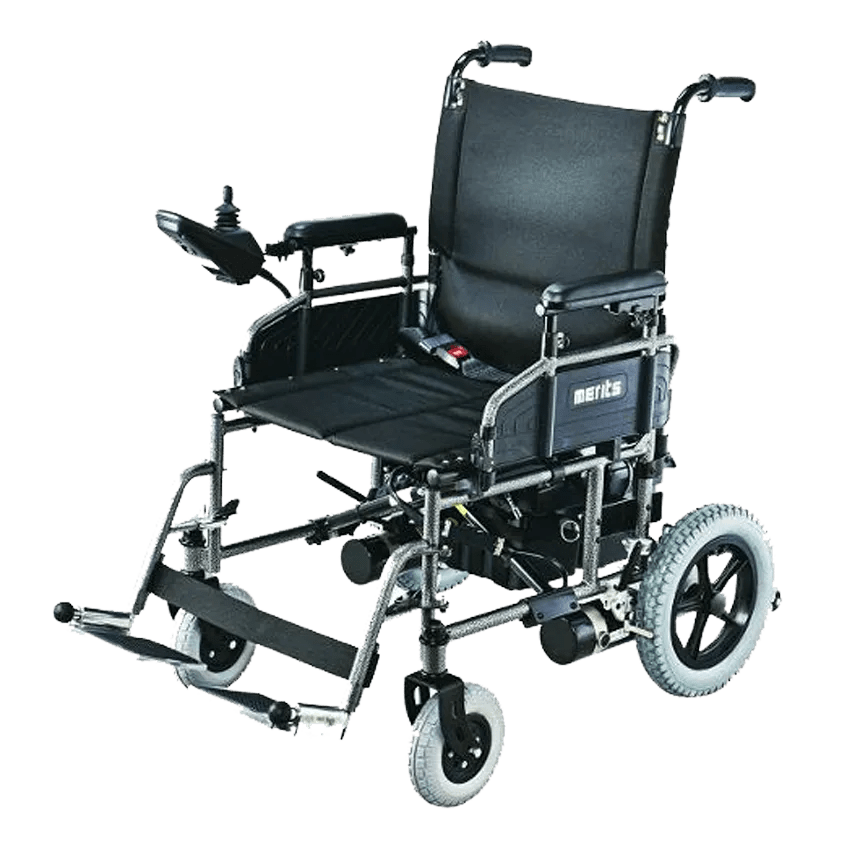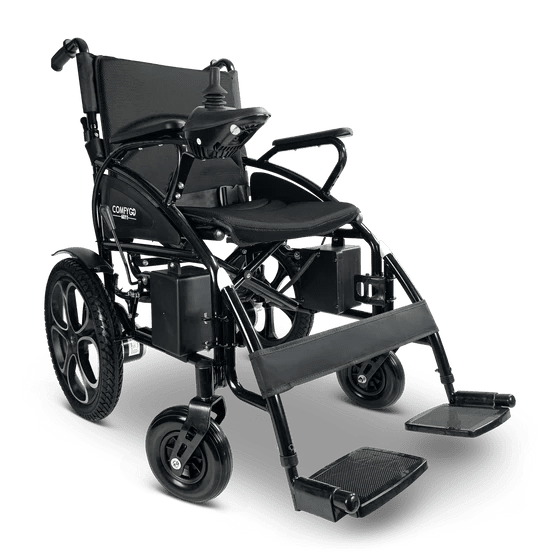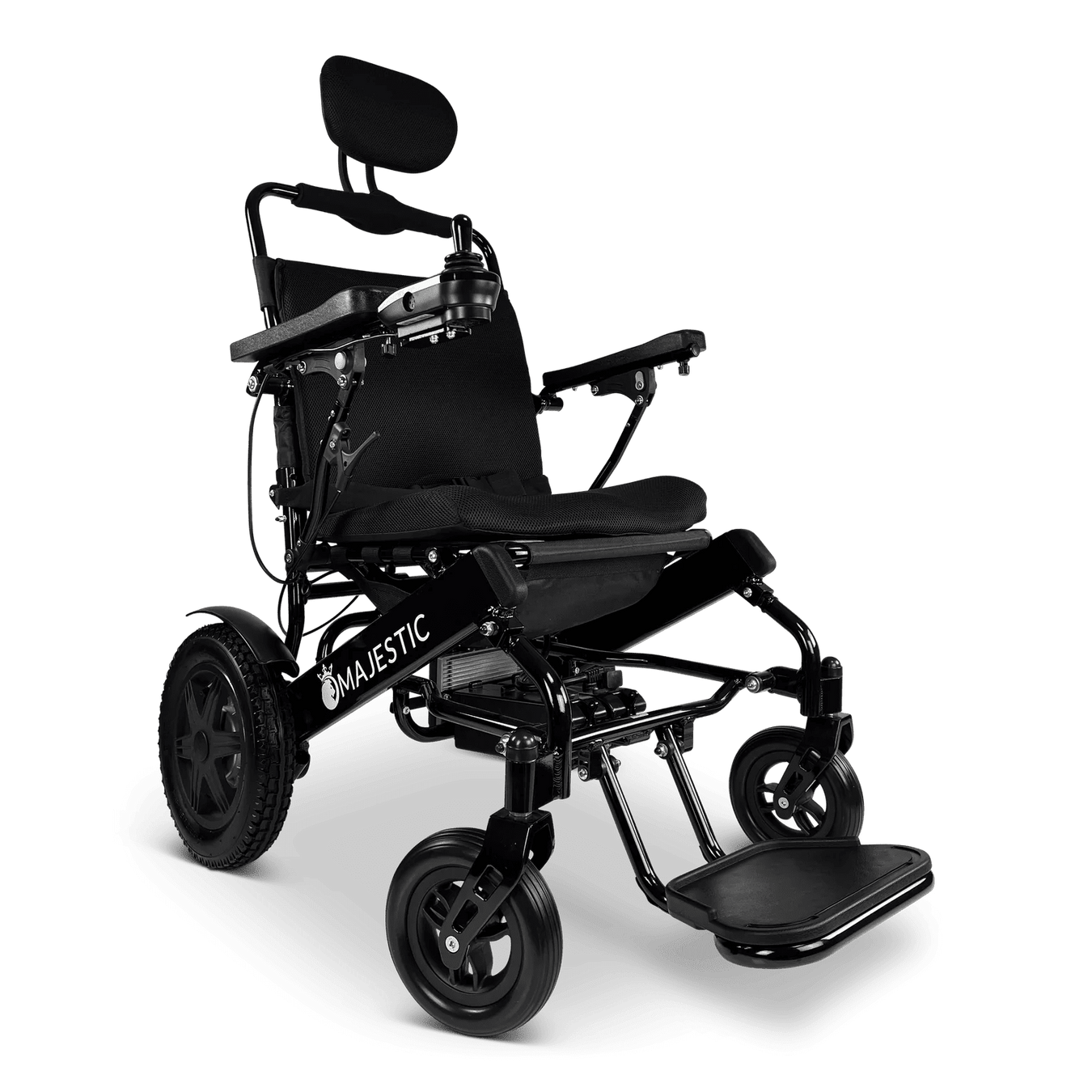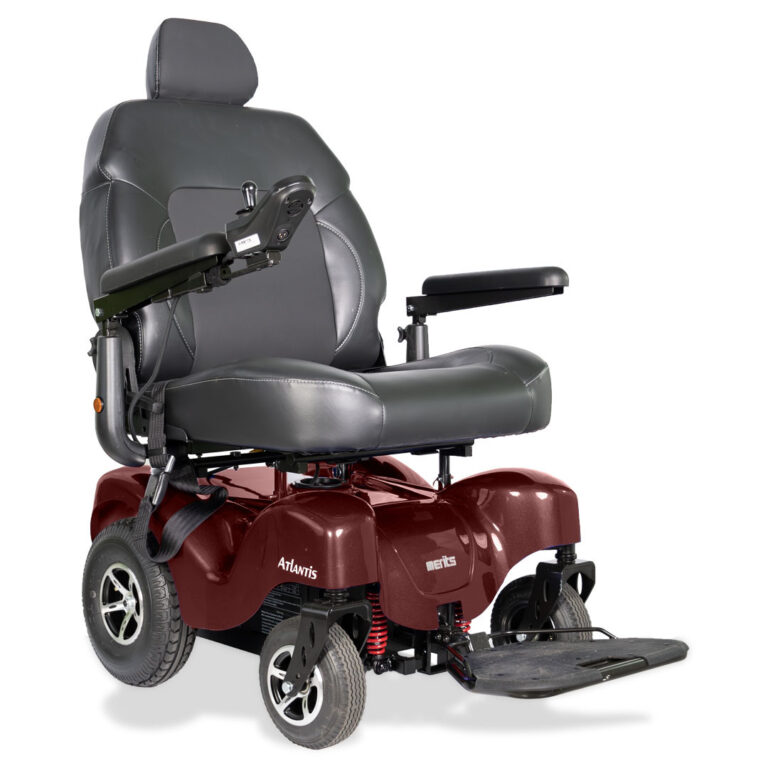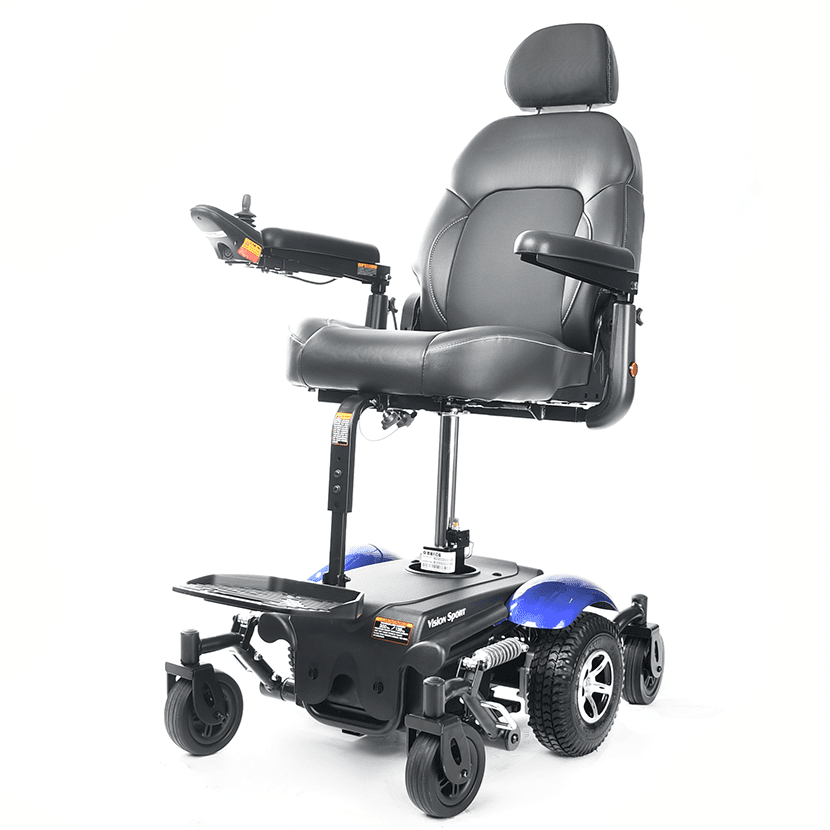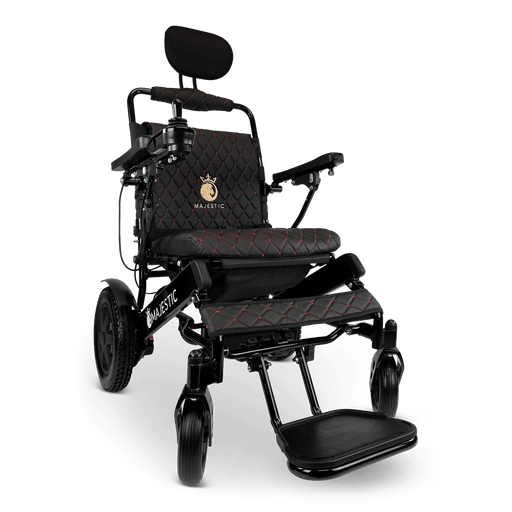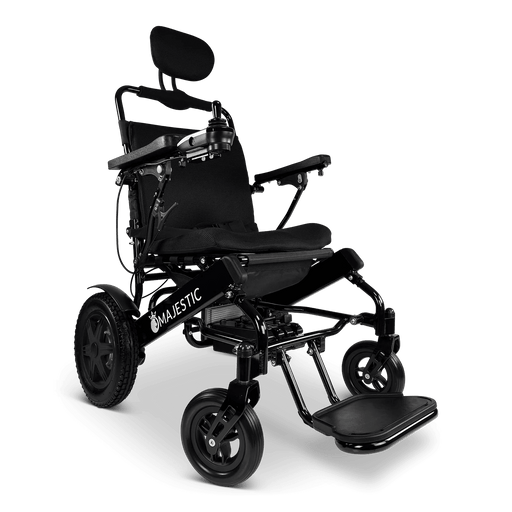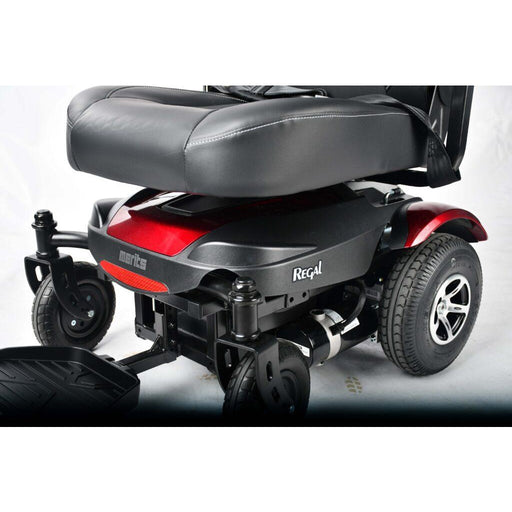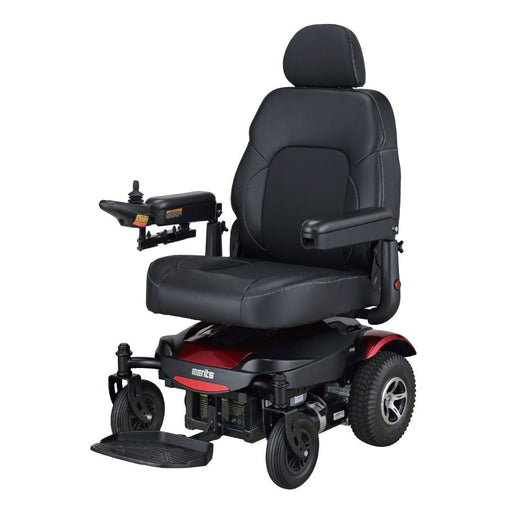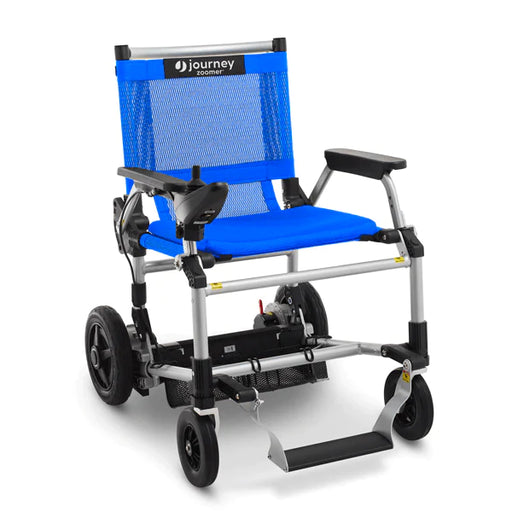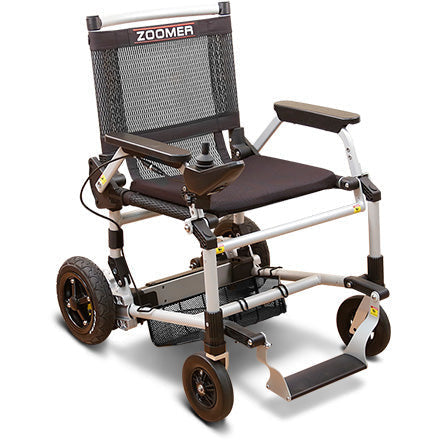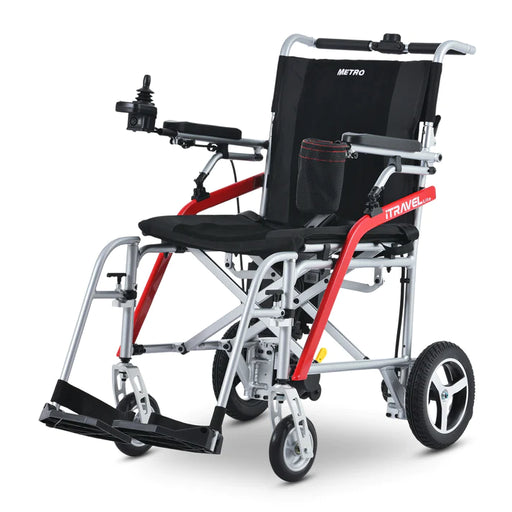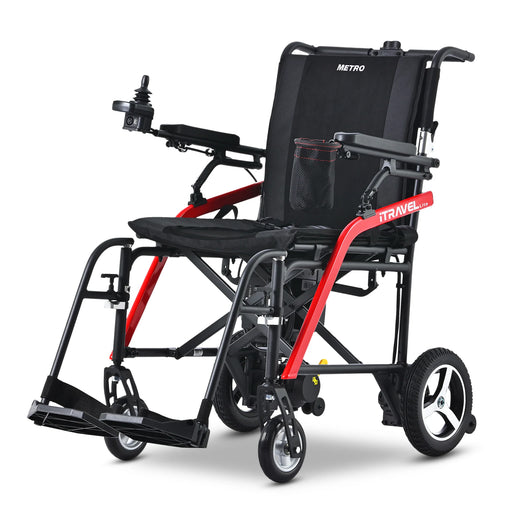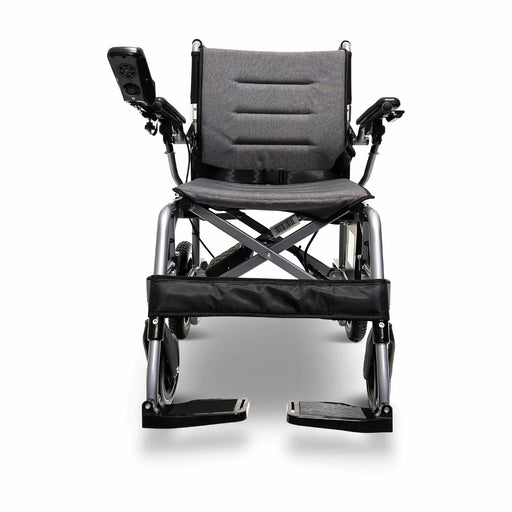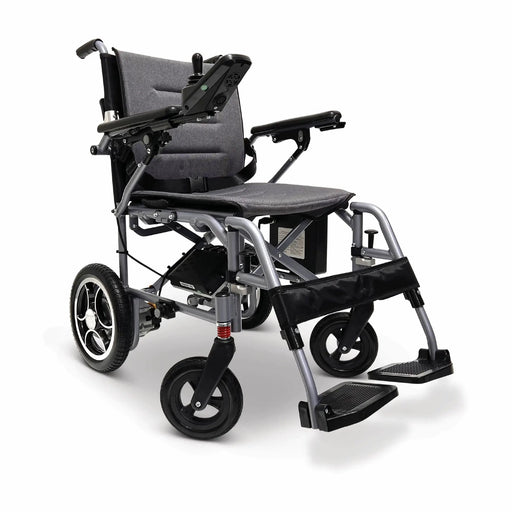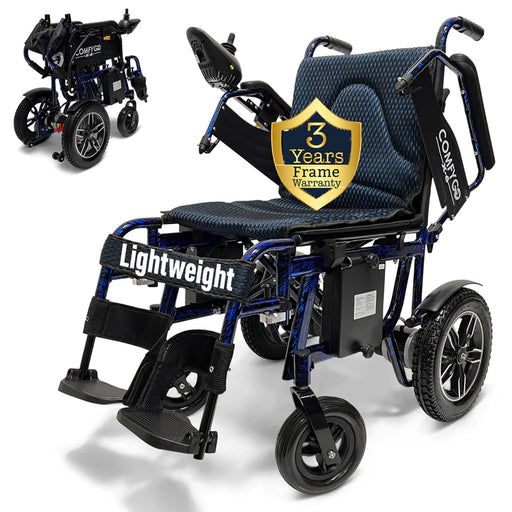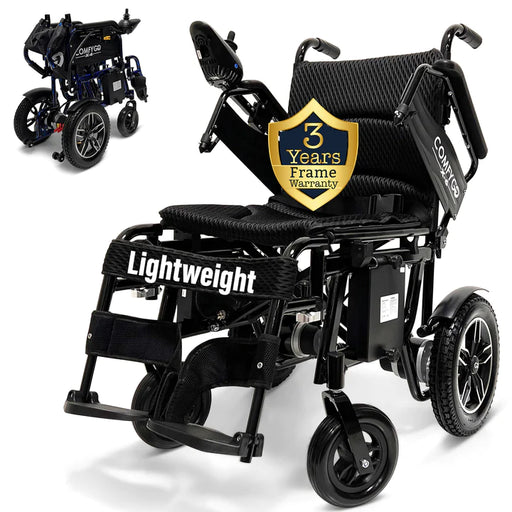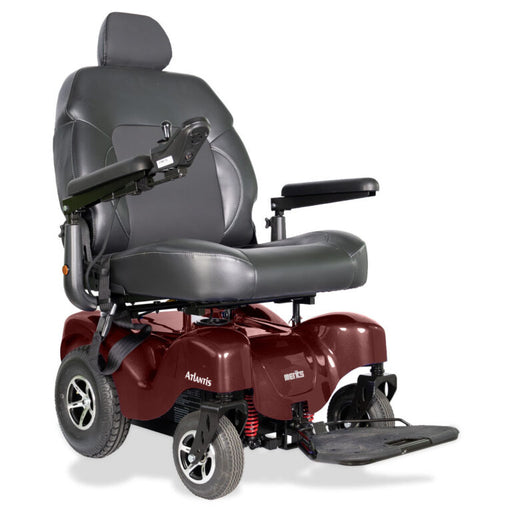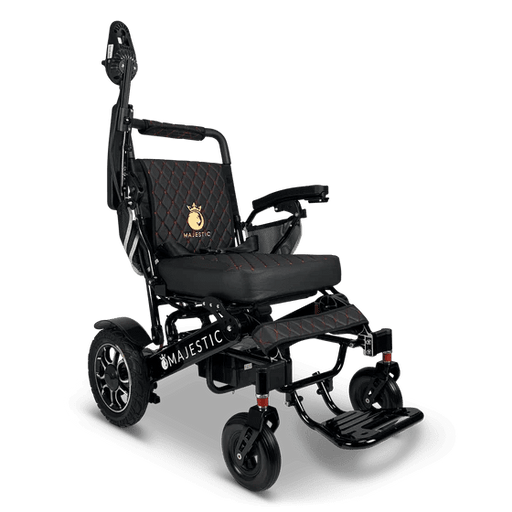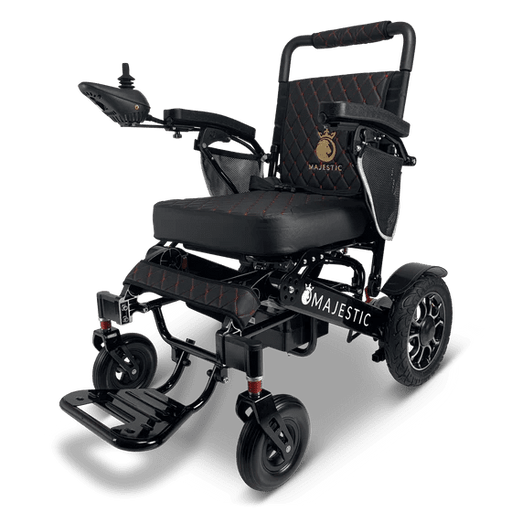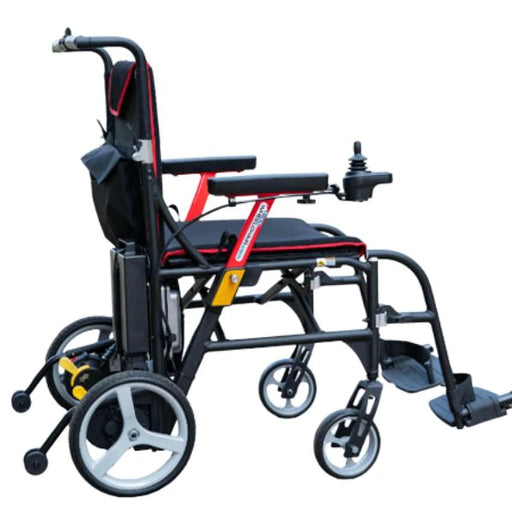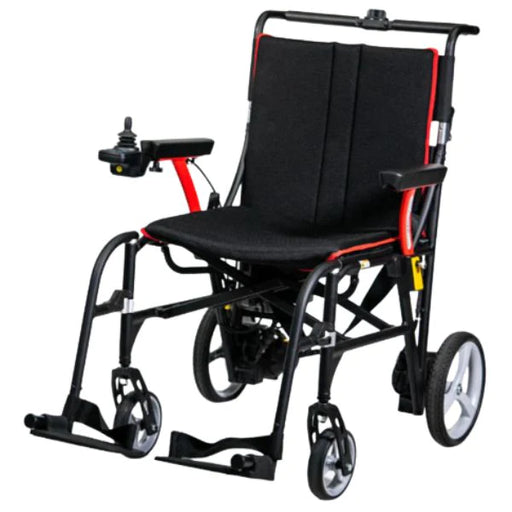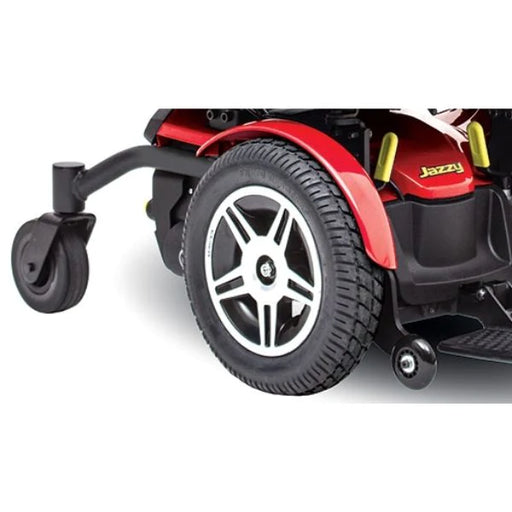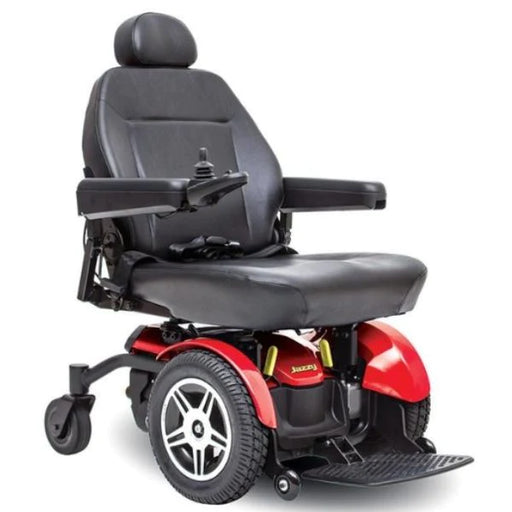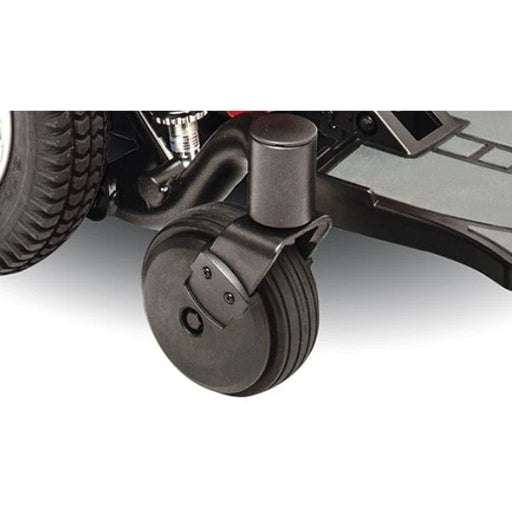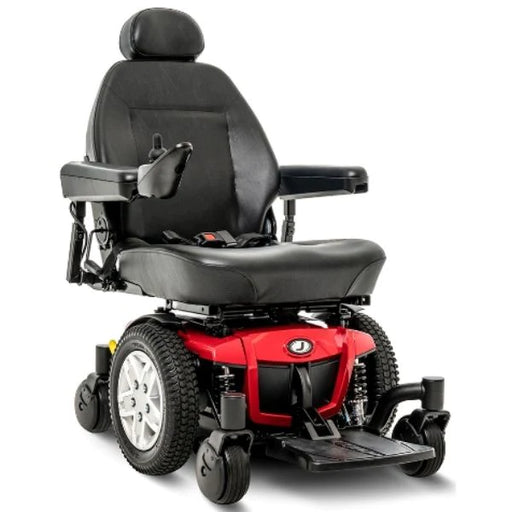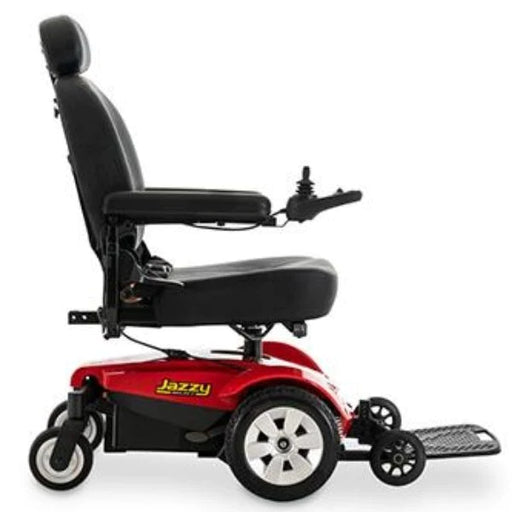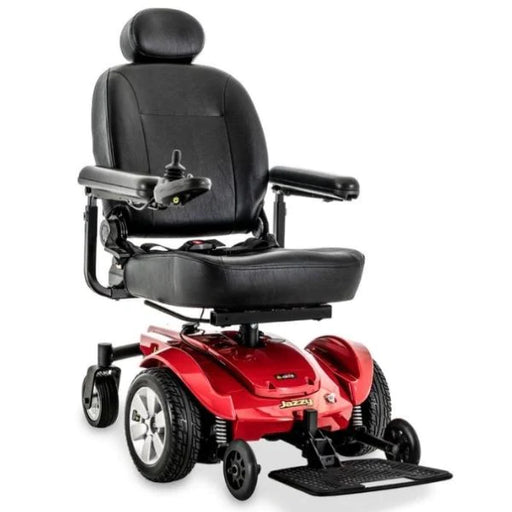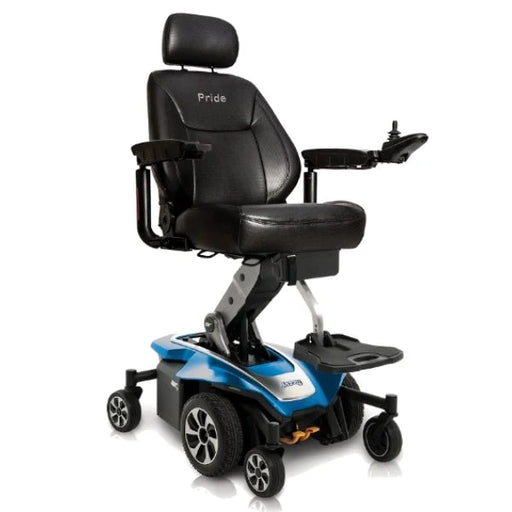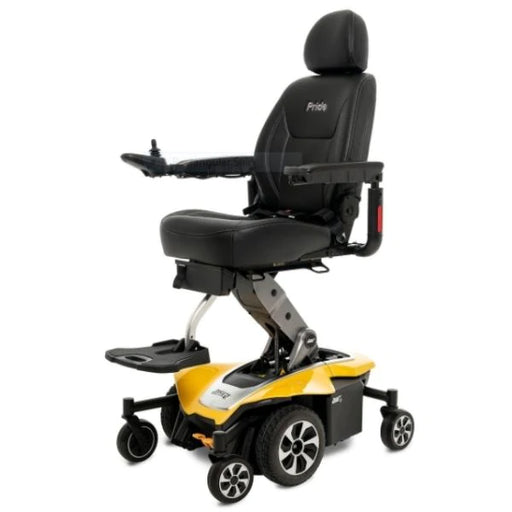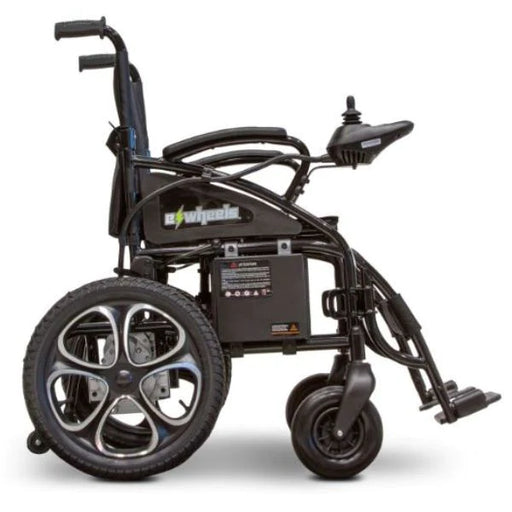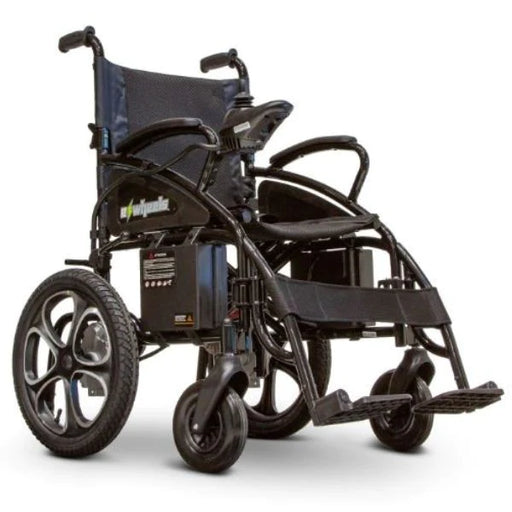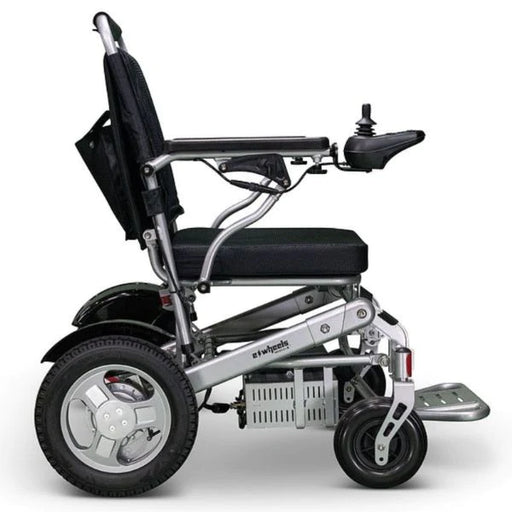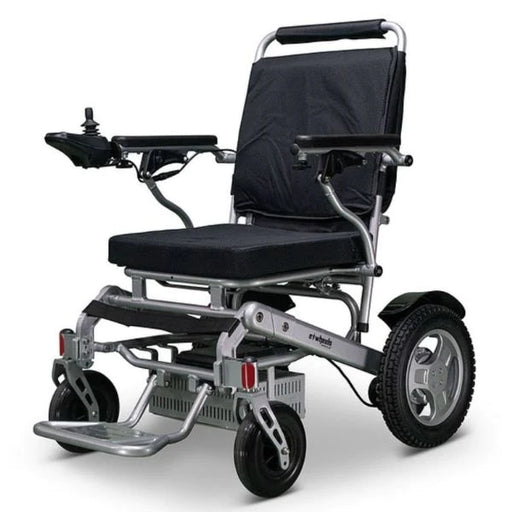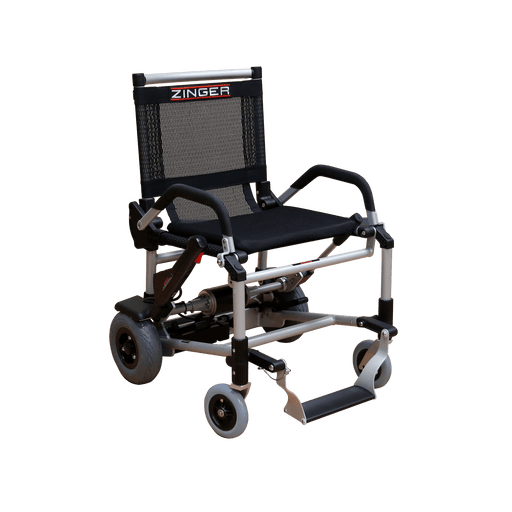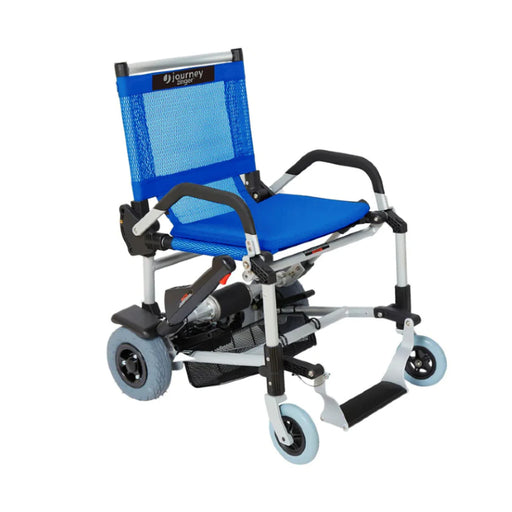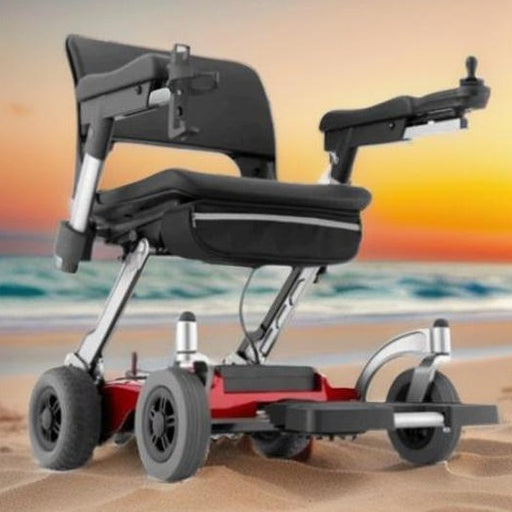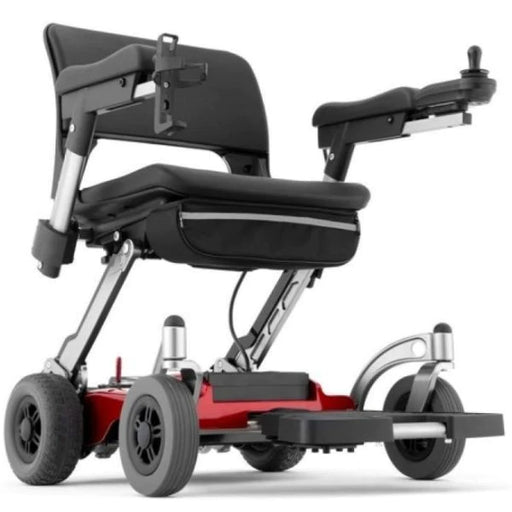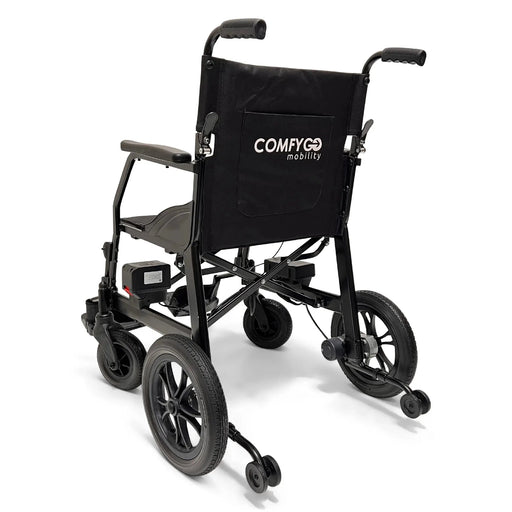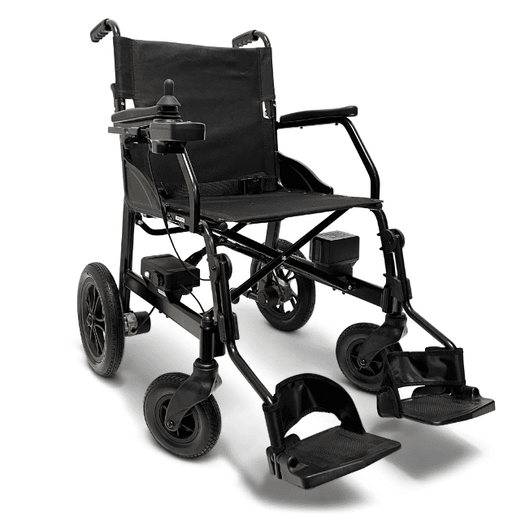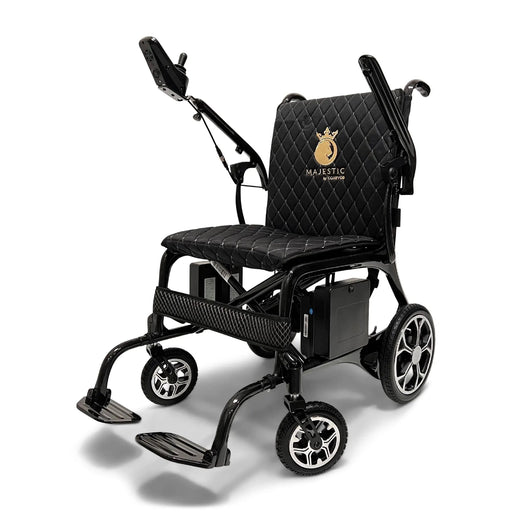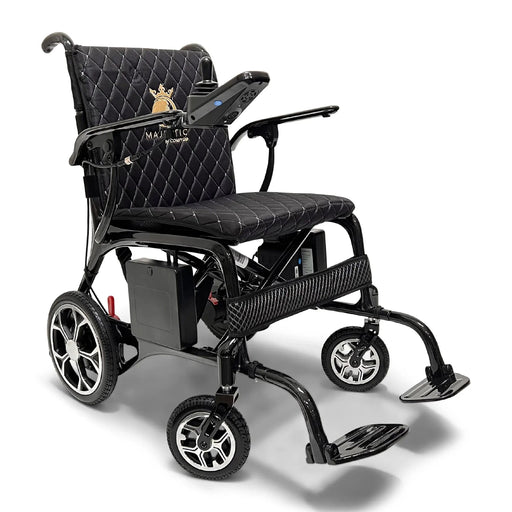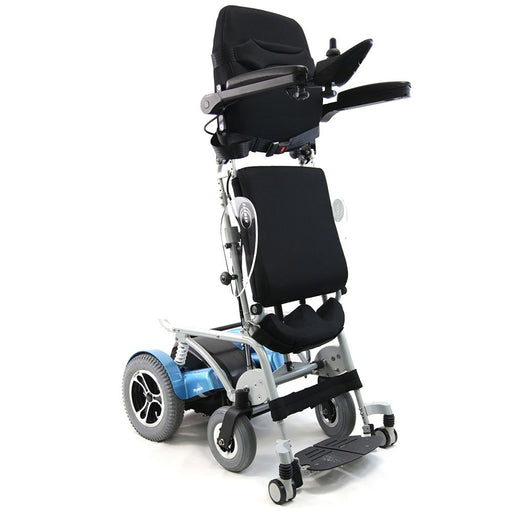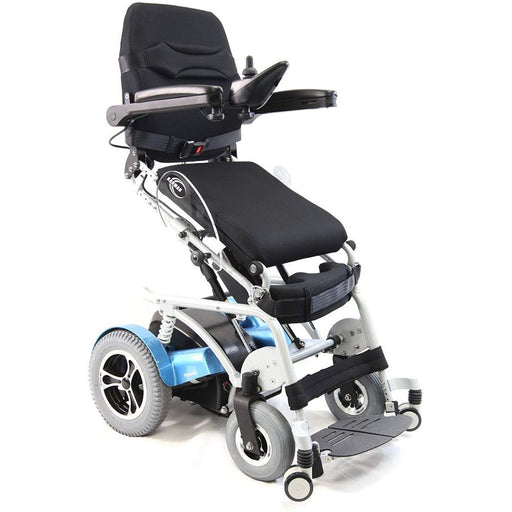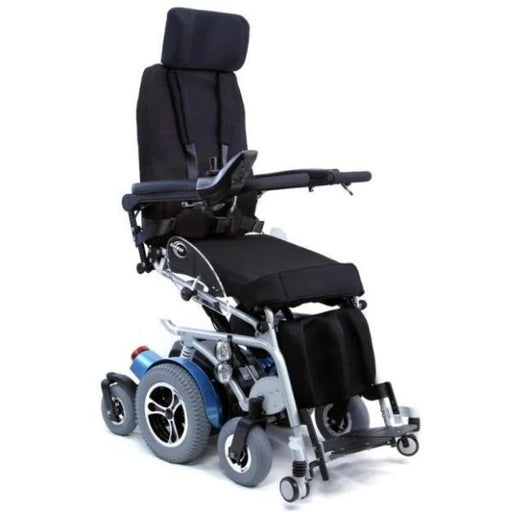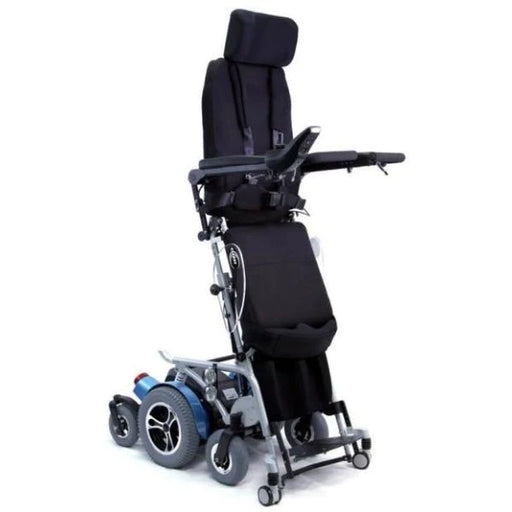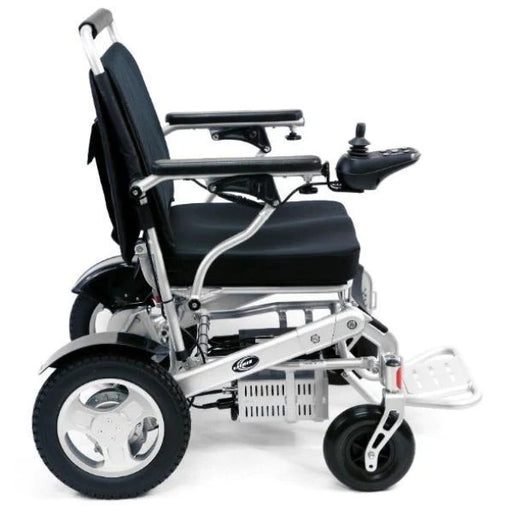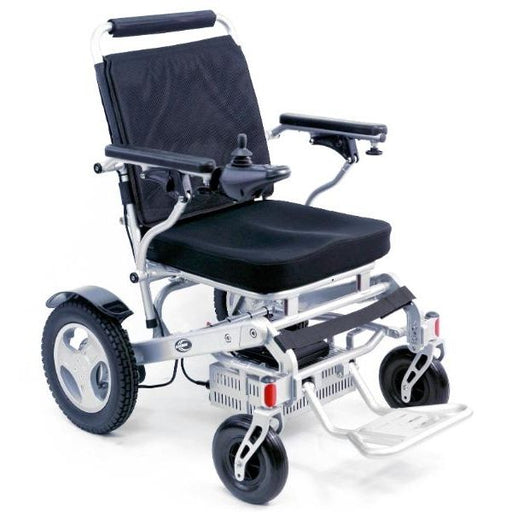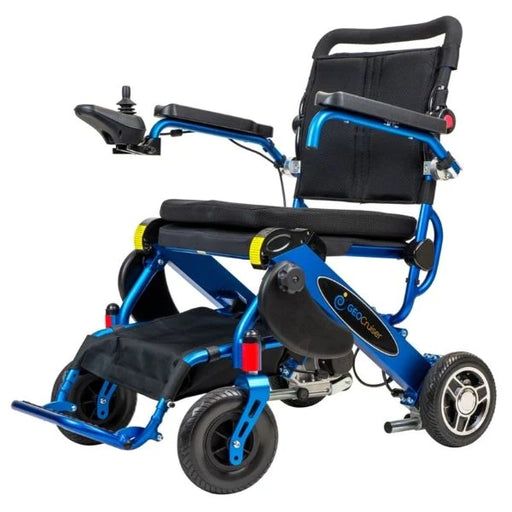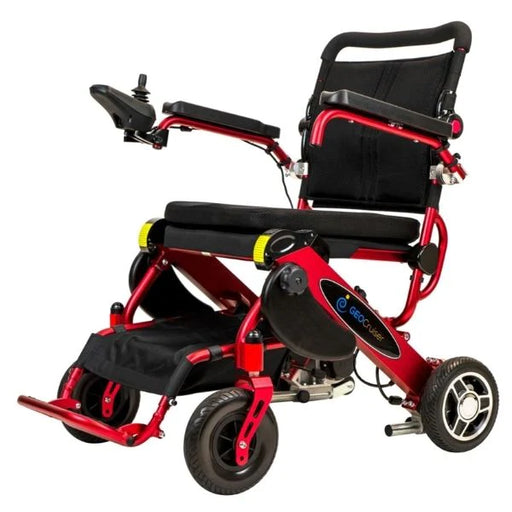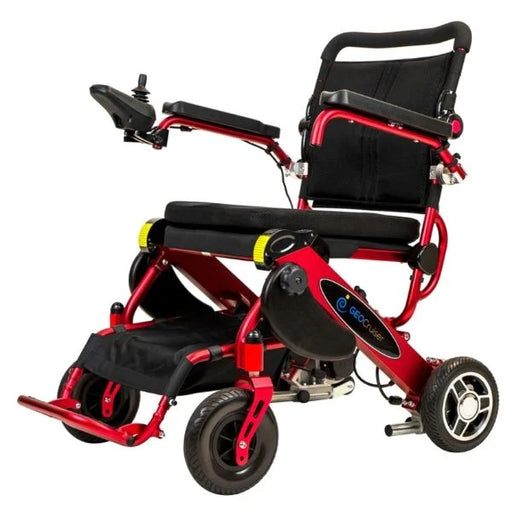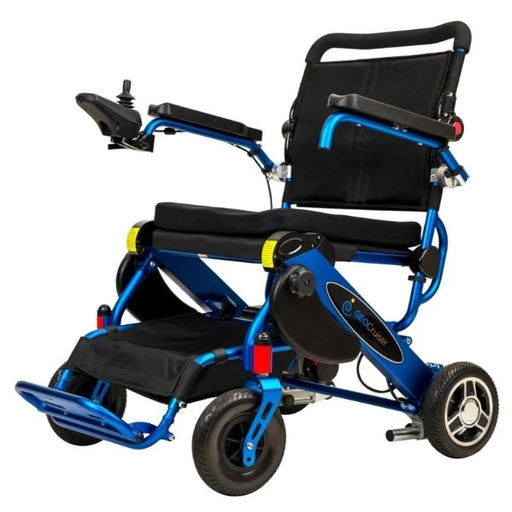Mon-Sun 9AM - 9PM EST
Power Wheelchairs
Power wheelchairs provide users with mobility and independence. They come in various types to suit individual needs and preferences, making them highly versatile for people with limited mobility. With modern enhancements like touchpad controls and personalized comfort accessories, electric wheelchairs offer a higher level of ease, allowing their users to navigate indoor and outdoor environments safely and comfortably.
In order to choose the best power wheelchair for one's personal needs, it's crucial to understand the key features and components of these mobility aids. This includes factors such as range, assembly and disassembly, as well as financial considerations. It is also essential to research and explore answers to commonly asked questions before making any informed decision. Power wheelchairs, also known as electric wheelchairs or motorized wheelchairs, are mobility devices designed for individuals with difficulty walking due to medical conditions or aging. These power chairs provide greater independence and freedom of movement for their users compared to manual wheelchairs and electric power wheelchairs. The key component that distinguishes power wheelchairs from other mobility aids is their electric motor, which propels the chair and eliminates the need for manual strength. This makes them suitable for users with limited upper body strength or stamina. One major feature of power wheelchairs is their control system. Users can operate the chair using a joystick, chin control, voice commands, or even foot control in some cases. This versatility allows for greater customization according to individual needs and physical abilities. Another significant difference between power wheelchairs and mobility scooters is the wheel configuration. Power chairs typically have two drive wheels and casters for enhanced stability. They also feature adjustable or removable foot platforms, allowing users to modify the chair for their comfort and convenience. In terms of power, electric wheelchairs rely on rechargeable batteries located in the power base below the seat. Most wheelchairs are designed to handle various terrains and provide smooth rides due to their different wheel systems. In summary, power wheelchairs offer users increased mobility and independence with their electric motor and customizable controls. The chair's adaptable features, such as the wheel configuration and foot platform, make it suitable for individuals with different needs and abilities. Power wheelchairs come in various types, each designed to cater to different needs and lifestyles. Knowing the different types can help users make an informed decision when choosing the best electric wheelchair for their specific requirements. Standard Power Wheelchairs are the most common type, offering a good balance between comfort, range, and ease of use. These chairs typically come with front-wheel drive and can travel up to 20 miles between charges. Their weight capacities range from 250 to 450 pounds. Lightweight Power Wheelchairs are designed to be more portable and easier to maneuver than standard models. They are ideal for users who are frequently on the go. This type of wheelchair may have a smaller range and lower weight capacity, but it usually compensates with added convenience and maneuverability. Heavy-Duty Power Wheelchairs are built for durability and handling larger weight capacities, which usually exceed 300 pounds. These chairs are designed for users with more substantial body frames and may come with additional features like reinforced frames and wider seats for enhanced comfort. Foldable Power Wheelchairs provide convenience for users who require a portable mobility solution. These chairs are designed to be easily folded, making them ideal for transport in vehicles or storing in compact spaces. Electric Wheelchairs come in various foldable models, catering to diverse user needs. In summary, users should choose a power wheelchair that best meets their specific needs, taking into account factors like weight capacity, portability, maneuverability, and the intended purpose of use. By understanding the various types of power wheelchairs available on the market, individuals can make more informed decisions and enhance their overall quality of life and independence. Power wheelchairs offer users autonomous mobility through various features and design elements. One of the most important components is the joystick. This device allows users to control the movement of the wheelchair by moving it forward, backward, left, and right. The joystick is a crucial interface that provides users with greater control over their mobility, especially when navigating tight spaces. Another important feature of power wheelchairs is the seat. The weight capacity of a wheelchair usually varies, and it's essential to choose one that meets the needs of the user. Many power wheelchairs are designed with padded seats that provide ample support and comfort. Some models even offer elevating seat options, which can help users reach higher surfaces and interact with their environment more easily. The arm rests of power wheelchairs are also essential, providing support and stability for the user. They can be adjustable in height or width to accommodate the user's preferences and requirements. Moreover, tires play a significant role in power wheelchairs. They come in various types, including pneumatic, flat-free, and foam-filled tires, each with distinct advantages depending on the intended use and terrain. Turning radius is another key aspect that should be considered, as it determines the wheelchair's ability to manoeuvre in tight spaces. A smaller turning radius enables users to make sharper turns and navigate confined areas more effectively. Suspension systems in power wheelchairs contribute to a smoother ride by absorbing shocks and vibrations from uneven terrain. They can enhance the chair's stability and comfort, especially during prolonged periods of use. Power wheelchairs are a vital tool for users with limited mobility. By integrating various features, they enable individuals to regain control and confidence while traversing their surroundings. From joystick controls to versatile seats, these key features help provide a comfortable and customizable Mobility Electric Wheelchair experience for users. Power wheelchairs offer a significant improvement in mobility for individuals with limited mobility or disabilities. One essential aspect of their performance is the travel range, which refers to the distance a power wheelchair can cover on a single battery charge. Typically, most power wheelchairs have a range of 10 to 20 miles per charge. The actual travel range depends on factors such as battery capacity, weight of the user, terrain, and the overall efficiency of the wheelchair. Battery life plays a critical role in ensuring a power wheelchair offers sufficient range and mobility. On average, wheelchair batteries can last for about one to two years. However, this lifespan can be influenced by various factors, including usage, weight, and proper charging habits. Regular maintenance and timely replacement of batteries are crucial for maintaining the optimal range and performance of a power wheelchair. Different power wheelchair models have unique weight capacities, which can affect the mobility and range of the device. Those designed for heavier individuals, such as the Porto Mobility Ranger D09 Wheelchair, boast a weight capacity of up to 396 pounds and can handle inclines of up to 25 degrees. The weight capacity should always be considered when selecting a suitable power wheelchair to ensure it meets the user's specific needs. In addition to range and mobility, various features can enhance the performance and convenience of power wheelchairs. Some models offer foldable designs, making them easier to transport and store when not in use. High-quality power wheelchairs may also include anti-tip wheels or flat-free, non-marking tires to ensure a safer and more comfortable ride. In conclusion, when selecting a power wheelchair, considering factors such as range, battery life, weight capacity, and mobility-enhancing features can make a significant difference in the user's overall experience and satisfaction. Power wheelchairs provide greater mobility and independence to many individuals with limited mobility. It's essential to understand the proper assembly and disassembly process to ensure safe and efficient use. This section will discuss the general process for assembling and disassembling power wheelchairs, focusing on mobility products like the Pride Mobility Go Chair. In general, power wheelchairs are delivered in three main parts: the base (including wheels), the seat, and the batteries. To assemble a power wheelchair, follow these basic steps: First, locate the base of the chair, which includes the wheels, motors, and drive system. Ensure it is positioned on a stable surface, with the wheels in drive mode. Second, install the batteries into the chair's base. Most power wheelchairs use two batteries, which should be securely fastened according to the manufacturer's guidelines. Make sure the cables are connected properly. Finally, position the seat assembly over the base of the chair, aligning the designated connection points. Once it is securely attached, adjust the armrests, seat back, and seat base as needed for a comfortable fit. Disassembling a power wheelchair follows a reverse process compared to the assembly. Here are the steps to take for disassembling a Pride Mobility Go Chair: Turn off the controller power and ensure the chair is in drive mode. Begin by removing the seat assembly, which typically includes the armrests, seat back, and seat base. Carefully lift off the seat from the base, placing it aside safely. Next, disconnect the battery cables and remove the batteries from the wheelchair's base. Make sure to store the batteries in a secure and dry location to avoid damage or potential hazards. Lastly, separate the power base into its components, which could include the rear and front sections of the power base and the under-seat storage bins if equipped. This step makes the wheelchair even more portable for storage or transportation purposes. Overall, understanding the assembly and disassembly process for power wheelchairs can greatly improve the user experience and ensure that the product functions efficiently when needed. Always follow the manufacturer's instructions for specific steps and guidelines related to your particular mobility product. When considering a power wheelchair, it is vital to understand the financial aspects involved. The price range for these mobility devices can vary significantly, with basic models starting around $600, while advanced power wheelchairs can cost over $15,000, depending on custom components and additional features. When looking for payment options, it's essential to explore various sources of financial assistance. Medicare is a valuable resource in the United States, as the Part B coverage includes mobility equipment such as wheelchairs under the durable medical equipment category. However, it is crucial to note that Medicare may not cover the entire cost of a power wheelchair. They usually provide coverage for 80% of the approved amount, and the individual is responsible for the remaining 20%. Private insurance policies may also cover a portion of the power wheelchair expenses, depending on the policy's specific details. It's advised to consult with the insurance provider to determine the extent of the coverage available. Some employers also offer assistance with accessibility equipment costs as part of their employee benefits package. Another payment option to consider is financing through companies like Affirm, which can provide affordable monthly payment plans, allowing individuals to purchase power wheelchairs without bearing the entire cost upfront. It is essential to carefully review the terms of any financing offer and ensure that the interest rate and repayment terms align with your financial situation. We offer this finance plan at Mobility Nest. For those without adequate insurance coverage or financing options, out-of-pocket expenses are a reality. In such cases, it is essential to budget carefully and explore various power wheelchair models to find one that suits your needs while remaining within your financial constraints. Additionally, consider seeking financial assistance from non-profit organizations, local fundraisers, or crowdfunding campaigns, which can help offset some of the out-of-pocket expenses related to purchasing a power wheelchair. In conclusion, understanding the financial considerations of acquiring a power wheelchair and using available resources can help potential owners make well-informed decisions, which will ultimately maximize mobility and independence. Several off-road power wheelchairs are available, offering rugged and durable options for navigating difficult terrain. The models vary in terms of their features, suspension systems, and tire types. It's essential to consider the specific terrain being traversed, individual needs, and budget when selecting the best off-road power wheelchair. Electric wheelchair prices can range widely, starting from around $1,000 for basic models and going up to $15,000 or more for complex, feature-rich wheelchair designs. Several factors influence the cost, such as the type of wheelchair, features, materials, and overall quality. There are various power wheelchairs available that can support weight capacities of 500 lbs or more. Bariatric power wheelchairs are specifically designed for heavier users, with reinforced frames and powerful motors to accommodate extra weight. When searching for a wheelchair, be sure to check the manufacturer's specifications to find a model that meets your weight capacity needs. Yes, folding and lightweight electric wheelchairs are widely available. These wheelchairs are designed to be portable and easy to transport, with features such as foldable frames and detachable parts. Lightweight materials like aluminum or carbon fiber are often used in their construction to further reduce weight and ensure ease of use. Medicare does cover the costs of motorized wheelchairs, provided specific criteria are met. For instance, the beneficiary must need the wheelchair for daily activities and must be unable to use a manual wheelchair. For Medicare to provide coverage, a physician needs to complete a face-to-face assessment and prescribe the power wheelchair. It's essential to consult with a Medicare representative or your healthcare provider for detailed information on coverage for your specific situation. Power scooters and electric wheelchairs both provide assistance for users with mobility limitations. However, power scooters usually have three or four wheels, a handlebar for steering, and a tiller for speed control. Electric wheelchairs, on the other hand, have a more traditional wheelchair design, with four or more wheels and are controlled by a joystick or control panel mounted on the armrest. Additionally, power wheelchairs often have more advanced features, including reclining or tilt-in-space functions, while scooters are usually more straightforward. The choice between a scooter and an electric wheelchair depends on individual needs, preferences, and usage requirements.Read more
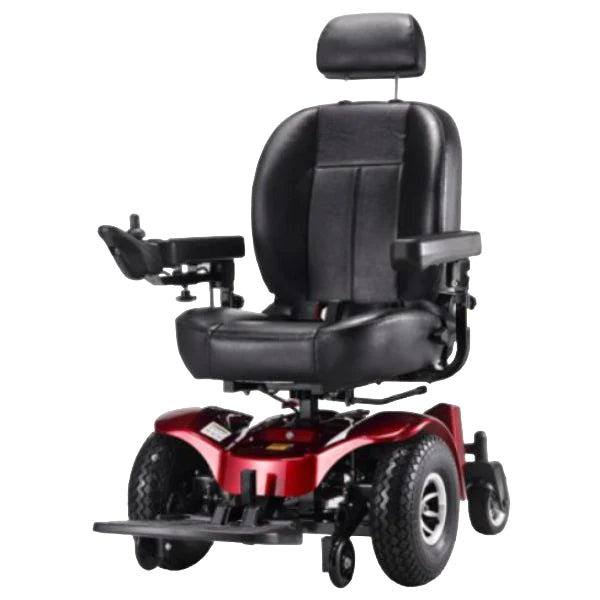
Key Takeaways
Understanding Power Wheelchairs
Types of Power Wheelchairs
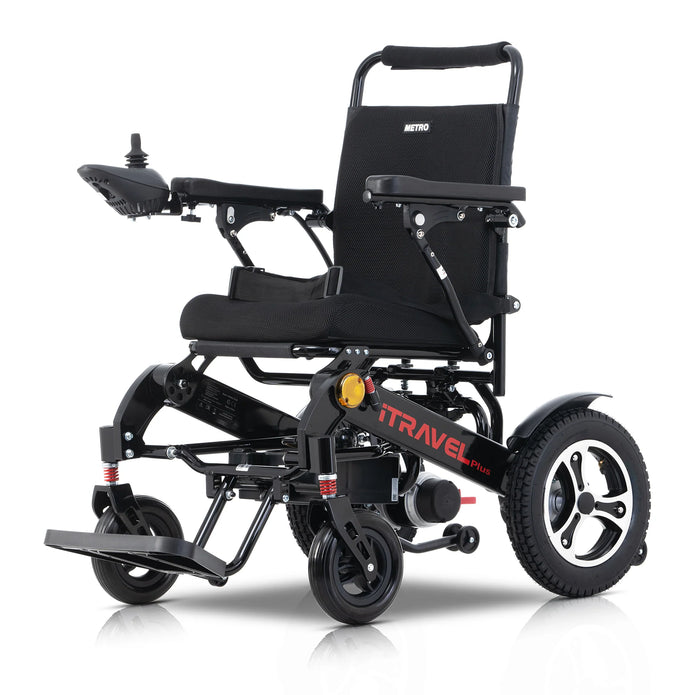
Key Features of Power Wheelchairs
Range and Mobility
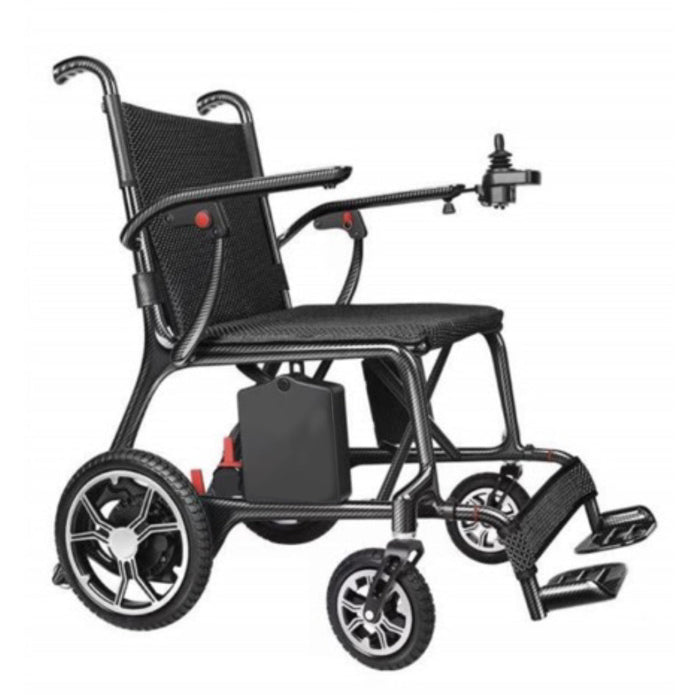
Assembly and Disassembly
Assembly
Disassembly
Financial Considerations
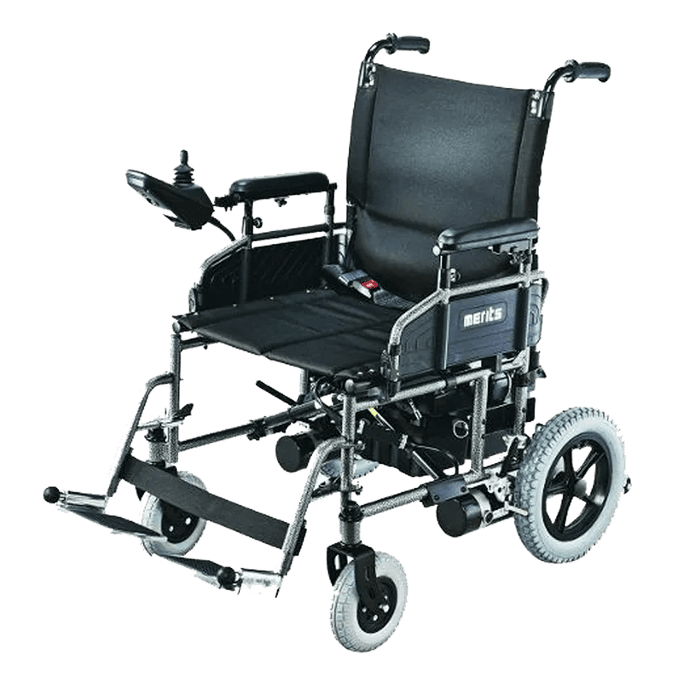
Frequently Asked Questions
What are the best off-road power wheelchairs available?
How much do electric wheelchairs typically cost?
Which power wheelchairs have a weight capacity of 500 lbs or more?
Are folding and lightweight electric wheelchairs widely available?
Does Medicare cover the costs of motorized wheelchairs?
What is the difference between power scooters and electric wheelchairs?
Filters
-
ComfyGO Majestic IQ-9000 Long Range Remote Controlled Folding Reclining Electric Wheelchair
ComfyGOOriginal price $3,280.00 - Original price $3,580.00Original price $3,280.00 - Original price $3,580.00Original price $3,280.00$1,899.00 - $2,349.00$1,899.00 - $2,349.00Current price $1,899.00| /5.0 / 5.0
5 Reviews
ComfyGO Majestic IQ-9000 Long Range Remote Controlled Folding Reclining Electric Wheelchair The MAJESTIC IQ-9000 wheelchair is an innovative, desi...
View full details -
Merits Health Regal Power Wheelchair
Merits HealthOriginal price $3,945.77Original price $3,945.77 - Original price $3,945.77Original price $3,945.77Current price $2,796.00$2,796.00 - $2,796.00Current price $2,796.00| /4.83 / 5.0
6 Reviews
Merits Health Regal Power Wheelchair The Merits Health Regal P310 wheelchair is designed to promote freedom and enhance mobility. Featuring a gener...
View full details -
Journey Zoomer Lightweight Folding Power Wheelchair
Journey Health & LifestyleOriginal price $3,199.00Original price $3,199.00 - Original price $3,199.00Original price $3,199.00Current price $2,945.00$2,945.00 - $2,945.00Current price $2,945.00| /5.0 / 5.0
8 Reviews
Journey Zoomer Lightweight Folding Power Wheelchair Introducing the Journey Health Zoomer Folding Power Chair, a game changer in the world of perso...
View full details -
Metro Mobility iTravel Lite Portable Folding Power Wheelchair
Metro MobilityOriginal price $1,999.00 - Original price $1,999.00Original price $1,999.00$1,999.00$1,999.00 - $1,999.00Current price $1,999.00| /Metro Mobility iTravel Lite Portable Power Wheelchair The Metro Mobility iTravel Lite Portable Power Wheelchair is one of the lightest electric whe...
View full details -
ComfyGO X-7 Lightweight Foldable Electric Wheelchair
ComfyGOOriginal price $1,999.00Original price $1,999.00 - Original price $1,999.00Original price $1,999.00$1,349.00 - $1,599.00$1,349.00 - $1,599.00Current price $1,349.00| /ComfyGO X-7 Lightweight Foldable Electric Wheelchair Gain mobility with the ComfyGo X-7: a lightweight, foldable electric wheelchair with powerful ...
View full details -
ComfyGO X-6 Lightweight Folding Electric Wheelchair
ComfyGOOriginal price $1,789.00Original price $1,789.00 - Original price $1,789.00Original price $1,789.00Current price $899.00$899.00 - $899.00Current price $899.00| /5.0 / 5.0
4 Reviews
ComfyGO X-6 Lightweight Folding Electric Wheelchair This ComfyGO electric wheelchair is remarkably lightweight, weighing in at only 50 pounds, maki...
View full details -
Merits Health Atlantis Heavy Duty Power Wheelchair
Merits HealthOriginal price $6,354.87Original price $6,354.87 - Original price $6,354.87Original price $6,354.87Current price $4,910.00$4,910.00 - $4,910.00Current price $4,910.00| /4.8 / 5.0
5 Reviews
Merits Health Atlantis Heavy Duty Power Wheelchair The Merits Health Atlantis Heavy Duty Power Wheelchair offers a comfortable ride with the...
View full details -
ComfyGO Majestic IQ-7000 Remote Controlled Folding Electric Wheelchair
ComfyGOOriginal price $2,360.00Original price $2,360.00 - Original price $2,360.00Original price $2,360.00$1,699.00 - $2,149.00$1,699.00 - $2,149.00Current price $1,699.00| /4.89 / 5.0
9 Reviews
ComfyGO Majestic IQ-7000 Remote Controlled Folding Electric Wheelchair The MAJESTIC IQ-7000 is a folding electric wheelchair that's great for trave...
View full details -
Feather Ultra Lightweight Folding Power Wheelchair
Feather MobilityOriginal price $2,699.00Original price $2,699.00 - Original price $2,699.00Original price $2,699.00Current price $2,295.00$2,295.00 - $2,295.00Current price $2,295.00| /Feather Ultra Lightweight Folding Power Wheelchair Are you searching for the perfect power wheelchair that's lightweight and easy to transport? Loo...
View full details -
Pride Jazzy Elite 14 Front Wheel Drive Power Wheelchair
Pride MobilityOriginal price $5,399.00Original price $5,399.00 - Original price $5,399.00Original price $5,399.00Current price $3,694.00$3,694.00 - $3,694.00Current price $3,694.00| /5.0 / 5.0
1 Review
Pride Jazzy Elite 14 Front Wheel Drive Power Wheelchair Are you after a power chair that stands out with strong traction and great outdoor perfor...
View full details -
Pride Jazzy 600 ES Mid-Wheel Power Wheelchair
Pride MobilityOriginal price $5,399.00Original price $5,399.00 - Original price $5,399.00Original price $5,399.00Current price $3,694.00$3,694.00 - $3,694.00Current price $3,694.00| /5.0 / 5.0
1 Review
Pride Jazzy 600 ES Mid-Wheel Power Wheelchair Looking for a power chair that effortlessly glides along and offers a smooth turning radius? Look n...
View full details -
Pride Jazzy Select Mid-Wheel Power Wheelchair
Pride MobilityOriginal price $5,399.00Original price $5,399.00 - Original price $5,399.00Original price $5,399.00Current price $3,694.00$3,694.00 - $3,694.00Current price $3,694.00| /Pride Jazzy Select Mid-Wheel Power Wheelchair Are you hunting for an active power chair with excellent performance, major driving range, and a co...
View full details -
Pride Jazzy Air 2 Elevating Power Wheelchair
Pride MobilityOriginal price $5,399.00Original price $5,399.00 - Original price $5,399.00Original price $5,399.00Current price $4,254.00$4,254.00 - $4,254.00Current price $4,254.00| /5.0 / 5.0
1 Review
Pride Jazzy Air 2 Elevating Power Wheelchair Introducing the Jazzy Air 2! This innovative power chair features an improved power elevating seat — ...
View full details -
EWheels EW-M30 Folding Power Wheelchair
EWheelsOriginal price $1,299.00Original price $1,299.00 - Original price $1,299.00Original price $1,299.00Current price $999.00$999.00 - $999.00Current price $999.00| /EWheels EW-M30 Folding Power Wheelchair Searching for an affordable power wheelchair with comfort? The EWheels EW-M30 provides it all. It's a trave...
View full details -
EWheels EW-M45 Folding Power Wheelchair
EWheelsOriginal price $3,299.00Original price $3,299.00 - Original price $3,299.00Original price $3,299.00Current price $2,199.00$2,199.00 - $2,199.00Current price $2,199.00| /EWheels EW-M45 Folding Power Wheelchair The EWheels EW-M45 Folding Power Wheelchair is perfect for those with an active lifestyle and limited stora...
View full details -
Journey Zinger Lightweight Folding Power Wheelchair
Journey Health & LifestyleOriginal price $3,299.00Original price $3,299.00 - Original price $3,299.00Original price $3,299.00Current price $2,545.00$2,545.00 - $2,545.00Current price $2,545.00| /5.0 / 5.0
8 Reviews
Journey Zinger Lightweight Folding Power Wheelchair Say hello to your new best friend, the Journey Zinger® Folding Power Chair Two-Handed Control! ...
View full details -
FreeRider USA Luggie Chair Folding Power Chair
FreeRider USAOriginal price $7,000.00 - Original price $7,200.00Original price $7,000.00 - Original price $7,200.00Original price $7,000.00$3,899.00 - $4,099.00$3,899.00 - $4,099.00Current price $3,899.00| /5.0 / 5.0
4 Reviews
FreeRider USA Luggie Chair Folding Power Chair Are you seeking a dependable power chair that is lightweight, durable, and can support a high weight...
View full details -
ComfyGO X-Lite Ultra Lightweight Foldable Electric Wheelchair
ComfyGOOriginal price $1,799.00 - Original price $1,899.00Original price $1,799.00 - Original price $1,899.00Original price $1,799.00$849.00 - $949.00$849.00 - $949.00Current price $849.00| /5.0 / 5.0
1 Review
ComfyGO X-Lite Ultra Lightweight Foldable Electric Wheelchair The ComfyGO X-Lite is an innovatively designed electric wheelchair, engineered with s...
View full details -
ComfyGO Phoenix Carbon Fiber Remote Controlled Folding Power Wheelchair
ComfyGOOriginal price $3,299.00 - Original price $3,399.00Original price $3,299.00 - Original price $3,399.00Original price $3,299.00$2,899.00 - $2,999.00$2,899.00 - $2,999.00Current price $2,899.00| /ComfyGO Phoenix Carbon Fiber Remote Controlled Folding Power Wheelchair Introducing the ComfyGO Phoenix Carbon Fiber Power Wheelchair, a foldable e...
View full details -
Karman XO-202 Stand-Up Power Wheelchair
Karman HealthcareOriginal price $22,350.00Original price $22,350.00 - Original price $22,350.00Original price $22,350.00$9,900.00 - $10,900.00$9,900.00 - $10,900.00Current price $9,900.00| /5.0 / 5.0
1 Review
Karman XO-202 Stand-Up Power Wheelchair This Karman model is equipped with a strong DC 24V/320W motor powered by two 12V 36AH batteries, allowing f...
View full details -
Karman XO-505 Standing Power Wheelchair
Karman HealthcareOriginal price $34,200.00Original price $34,200.00 - Original price $34,200.00Original price $34,200.00Current price $14,870.00$14,870.00 - $14,870.00Current price $14,870.00| /5.0 / 5.0
1 Review
Karman XO-505 Standing Power Wheelchair Equipped with a 6-wheel design and rear shocks, the XO-505 tackles the toughest outdoor terrains with ease....
View full details -
Karman Tranzit Go Foldable Lightweight Power Wheelchair
Karman HealthcareOriginal price $5,247.00Original price $5,247.00 - Original price $5,247.00Original price $5,247.00Current price $2,599.00$2,599.00 - $2,599.00Current price $2,599.00| /Karman Tranzit Go Foldable Lightweight Power Wheelchair Our customers are always searching for a lightweight, foldable power chair that can come wi...
View full details -
Pathway Mobility Geo Cruiser Elite EX Folding Power Wheelchair
Pathway MobilityOriginal price $3,195.00Original price $3,195.00 - Original price $3,195.00Original price $3,195.00Current price $2,595.00$2,595.00 - $2,595.00Current price $2,595.00| /Pathway Mobility Geo Cruiser Elite EX Folding Power Wheelchair Are you in the market for a lightweight, folding electric wheelchair that can suppo...
View full details -
Pathway Mobility Geo Cruiser LX Folding Power Wheelchair
Pathway MobilityOriginal price $2,795.00Original price $2,795.00 - Original price $2,795.00Original price $2,795.00Current price $2,295.00$2,295.00 - $2,295.00Current price $2,295.00| /Pathway Mobility Geo Cruiser LX Folding Power Wheelchair Are you in need of an ultra-lightweight, collapsible power wheelchair? The Geo Cruiser LX ...
View full details
Let customers speak for us
from 562 reviewsMy husband loves it. I don't want to speak for him but he likes the scooter a lot. It helps him. He had some anxiety to get a scooter and how that would look, but decided to go for it and hasn't looked back.

I have had my scooter for several months now, and it has given me freedom! I always feel safe, even crossing the street. It has plenty of power, even going up hill. I bought a red one, (per my children's instructions), so I am easily seen. I am so happy with it!!!

I wish i got this product sooner. I finally got my bank account to go through and was super happy. This is a great scooter. The battery lasts for a long time and it's very easy to take apart.

This scooter is a great solid mobility scooter. Very strong build quality. The seat is very comfortable and adjusts right to my needs. Shoutout to Mobility Nest for being such kind people. Would recommend!

This is the only chair I can have because it only weighs like 20 pounds. I didn't think something would be possible but I guess technology is improving these days. Great product quality nonetheless.

I don't even know where to start. I actually first saw this on QVC but they don't sell it anymore. Did some research and ended up here. It took me a couple days to finally pull the trigger, but I am glad I did. I called expressing my concerns, but they were answered immediately. I'm glad I spent my money here. Everything is great, and I would buy again right now if I had the opportunity.

Hello,
I bought the Afiscooter C4 with the Canopy and it was a great decision. It was hard to pull the trigger but I ended up doing their monthly payment options. I've never seen a mobility scooter with this canopy and I could not be more happy with the product that I got.
If anyone is doubting, I would not be worried!

This purchase was a big deal for me and just so different with the interior mount that I was a little extra nervous. I shouldn’t have been, the folks at Mobility Nest were on top of my order every step of the way. After delivery they had arranged a local service technician come by to install the mounting system and show me how to use it. The technician, John, was kind and very knowledgeable considering it was the first one he’d seen. He told me he studied the guides online and the mounting hardware was installed easily with no need to back track.
The Quingo Flyte itself is amazing. There’s some prep to be done before loading and unloading but the baskets and chair arms go on and off easily. The coolest thing is the quingo loading and unloading itself, but the scooter is stable and easy to drive. I’m still working out my per charge range, but that will come in time.
If you are considering this Quingo Flyte I highly recommend that you order through Mobility Nest. I was in safe and caring hands the entire time. So impressed.

The Hoyer lift and rapid delivery exceeded my expectations. In this day of on line purchasing, few purchases are as good as advertised. But this Hoyer lift is well designed, built, priced right, and delivered to meet the buyers needs. Thank you so much.

This scooter is truly amazing, Everyone that sees it, asks me how I like it and I tell them it's absolutely life changing ..
Everything advertised and more..

Iam a BATKA (Bilateral Above The Knees Amputee) and was graciously donated my zinger chair by the Dover Delaware Lions Club. I use it on a daily basis, it helps me tremendously in staying active when I'm not upright walking in my prosthetic legs. It's very durable, comfortable and can go through more difficult terrain. I highly recommend zinger products for people with handicaps.

I bought this scooter in 2008 or 2009, I put thousands of miles on mine when I lived in Uptown Minneapolis and worked in downtown Minneapolis. In the summer months I would ride it to work and back daily, about 3.1 miles each way. In the winter I would keep it at my office and use it in the skyway system all winter, it worked brilliantly. I took toRead more about review stating 10 YEARS ON IT'S STILL A FANTASTIC SCOOTER FOR OUTDOOR AND INDOOR ACTIVITIES on many bike trails around Minneapolis and visited friends up to 5 miles away with complete confidence it would easily make the round trip, I also to it several state fairs and festivals, it always worked great. I had to replace batteries twice but that comes with the territory of an electric vehicle. The support from the factory was excellent, I never had any issues with the scooter and was very happy to pass it along to person with MS who still uses it to this day. I don't know how long it will keep going but for now anyway it shows not signs of stopping.

I walk the dogs and visit neighbors and this works for me. Great turning and I'm happy with it.



